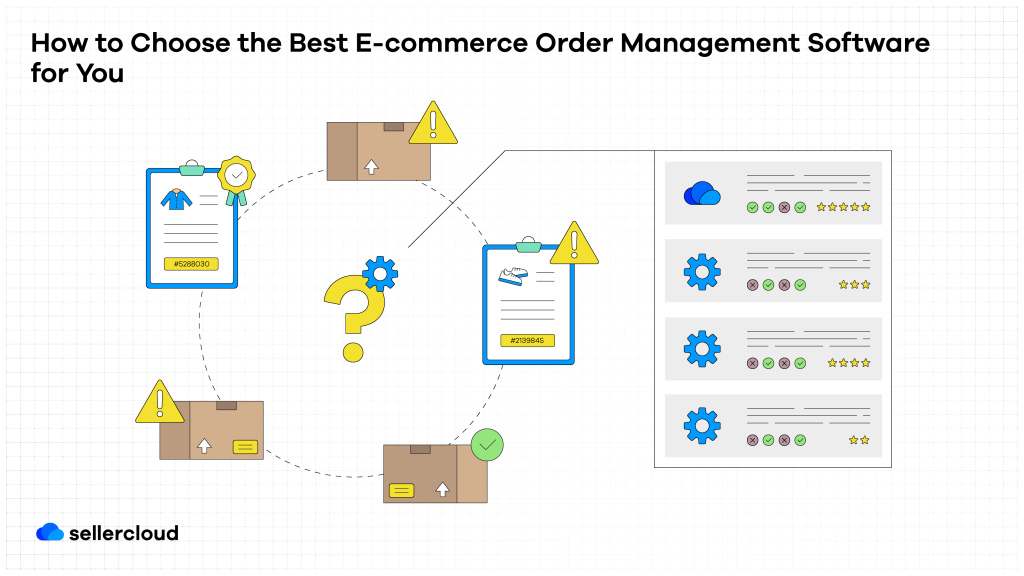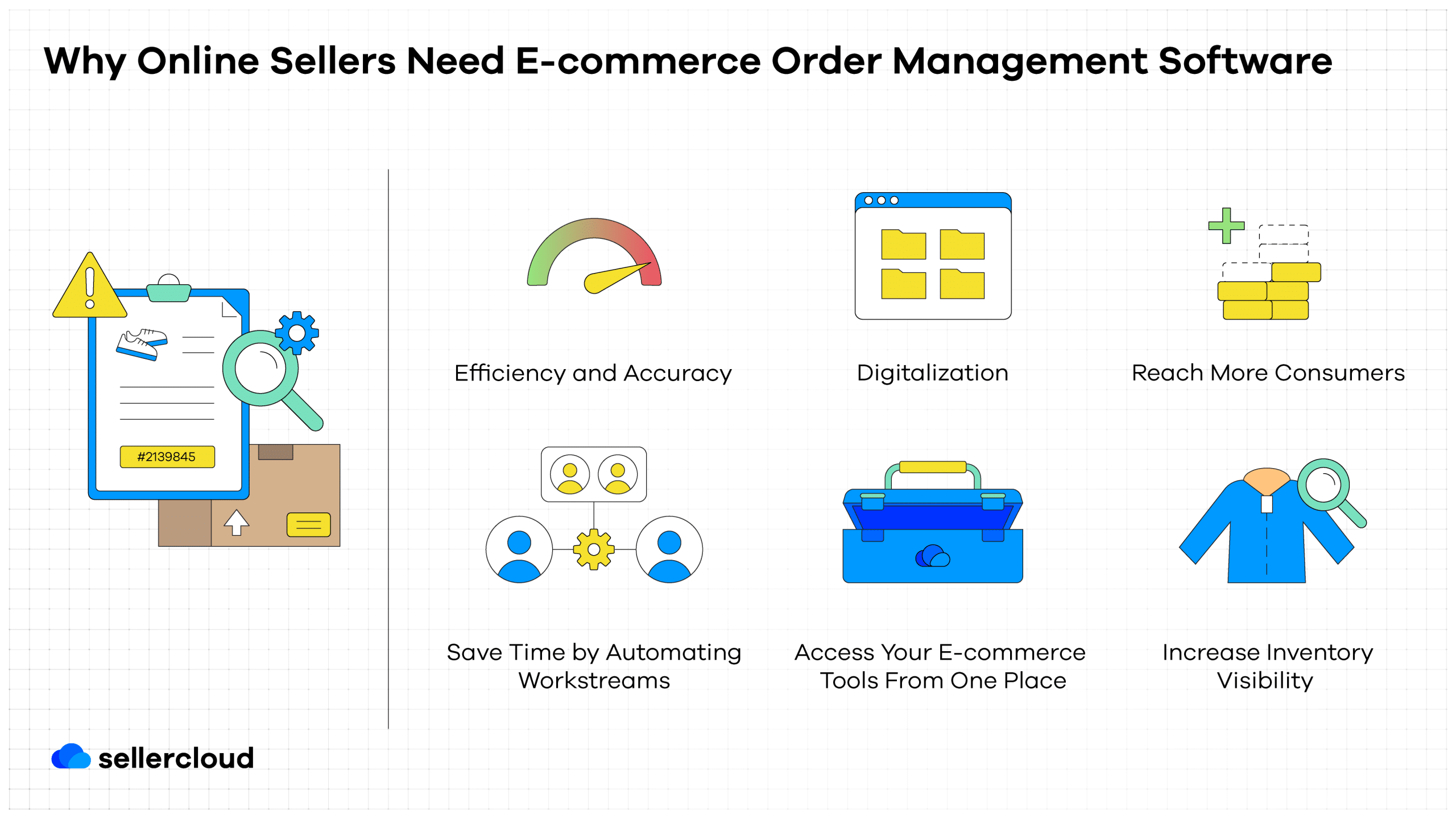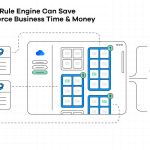
Determining which ecommerce order management software (‘OMS’ or ‘Order Management System’) best suits your business needs can be challenging.
Without an ecommerce OMS, you must manually process orders and shipments and handle returns, which can take time, especially if your business is growing rapidly.
Choosing the wrong ecommerce OMS can cause delays, lead to expensive mistakes, and, worse of all, result in customer loss.
In this article, we’ll explain why sellers need ecommerce order management software and how to decide which order management solution is best for their business and workflows.
Top Ecommerce Order Management Software Solutions
In 2023, several excellent choices for ecommerce order management software will be available. However, the closer you look, the more differences you will find.
Some may be perfect for your business but don’t include critical features and integrations. And then there will be some that are exactly what you need but cost far too much.
Let’s look at some of the most popular solutions today and what makes them stand out.
ChannelAdvisor (now known as Rithum)
ChannelAdvisor has been around since 2001, making it one of the most established ecommerce OMSs on this list. This is great if you’re looking for experience.
What’s nice about ChannelAdvisor is that clients can choose a marketplace to sell on, and they forward them to people in that marketplace who can help them sell there effectively.
ChannelAdvisor is also a strong choice if sellers want to focus on catalog and brand growth, as it is known for publishing listings on multiple channels.
However, sellers are limited to the channels offered by ChannelAdvisor. They do not provide a WMS (Warehouse Management System), and their order management system lacks many vital features that smaller and cheaper solutions offer.
Successful sellers can quickly grow from ChannelAdvisor’s order management capabilities and must move on to another solution.
A big deciding factor for sellers is the comfort of knowing that they can rely on getting the support they need when they need it most.
ChannelAdvisor has a poor reputation for customer support. At the time of writing, it has a Trustpilot rating of 1.5 stars out of 5, which is considered ‘Bad.’
Cost: ChannelAdvisor requires a multi-year subscription service, which is not cheap. It can cost $1,000 monthly plus 1.3% to 1.7% of your revenue share or 2.3% to 2.4% if revenue is exceeded.
There are also channel integration fees. For example, ChannelAdvisor can cost sellers $750 monthly to integrate with Amazon.
Sellbrite
Sellbrite targets small to medium-sized businesses and is a good tool for listing, shipping, and inventory management, though it lacks some valuable tools.
However, Sellbrite might be the right ecommerce OMS for you if you don’t need too many features. After all, what’s the point of investing in features you’ll never use?
Like ChannelAdvisor, Sellbrite offers great order management software until your business reaches a certain size and can no longer provide real scalability.
Sellers still must handle many processes alone. Furthermore, Sellbrite is not very configurable and has only a few integrations.
All in all, this might be problematic if you later decide you need more functionality. You might have to switch to another OMS, which will be time-consuming.
Cost: Sellbrite starts from $29 per month for up to 100 orders a month and to $1,718 per month for up to 100,000 orders. FBA orders will cost another static $19 per month.
Sellers can also expect to be charged an onboarding fee.
Brightpearl
Brightpearl offers an exceptional range of advanced features and integrations and is better for larger companies that need more services to scale out.
For example, Brightpearl offers advanced purchasing and forecasting. It also claims to offer real-time inventory updates and approximately 200 integrations.
However, Brightpearl doesn’t offer WFS (Walmart Fulfillment Services), which is becoming increasingly popular among ecommerce sellers.
Furthermore, while Brightpearl has a WMS, a separate company provides it, which can be problematic if they need to update or fix it.
Brightpearl also lacks round-the-clock customer support, and its order management software has some reputational damage they are trying to fix.
Cost: Brightpearl’s cost is quotation-based and modular. It claims that “you pay for what you need,” though some quotes start at an enormous $10,000 per month.
Typically, Brightpearl will scope out a client’s business and make an offer, so they’ll most likely contact the seller first, not the other way around.
Sellercloud
With more than 300 active integrations, Sellercloud has the most integrations on this list and offers the most features, so there is little you won’t be able to do.
Whether serialized items, multiple warehouses, or free shipping software, Sellercloud offers limitless potential in its order management software.
Sellercloud is built for sellers with a strong focus on customization and customizable plugins. Any customization you need to help your workflow can be built quickly, in-house, at an unbeatable price.
You can also create a custom order rule engine and manage RMAs.
Sellercloud is particularly good for resellers and refurbished products because its inventory management tool makes it easy to create and clone listings.
As an omnichannel solution, Sellercloud’s channel is also open to sellers, who can sell wherever they like.
Sellercloud is also centralized software, which makes it easier for them to find problems and fix them.
One thing to consider with Sellercloud is that it is a US company that operates primarily in North America.
This means some parts of the software are very US-focused. For example, reports are only in USD.
Cost: Sellercloud costs a minimum of $1,199 per month until the cost of orders exceeds this price.
It’s also worth noting that the price per order decreases each time you pass a certain threshold of orders.
You can also opt into additional features such as Skustack WMS or Skublox, which eliminates any space for human error when sorting or fulfilling orders.
Sellercloud does not try to lock sellers into big contracts and is transparent with its pricing. You can find out more about this on the Sellercloud pricing page.
SellerActive
SellerActive is similar to Sellbrite in that it is a simple service with few features and 22 integrations.
It works well for small and medium-sized businesses, but again, as you reach a certain size, it might not be enough to satisfy all your ecommerce needs.
In many ways, SellerActive is closer to an application, not software. It’s not too configurable, and sellers will lack crucial features like dropshipping, RMA, and accounting.
It’s also worth noting that some of SellerActive’s services, such as WMS and shipping, are provided by third parties.
Again, you may regret not having some useful features later, so you must clearly understand what you need.
SellerActive doesn’t have too many Trustpilot reviews, but the ones it does have don’t paint a pretty picture. At the time of writing, it has an average of 2.8 stars out of 5.
Cost: Sellers can pay a one-time fee of $500 for a 30-day implementation or a $1,250 one-time fee for a 90-day implementation. Sellers must pay to be onboarded.
SkuVault
SkuVault is another great ecommerce order management software with partnerships with Sellbrite, SellerActive, ChannelAdvisor, and around 52 integrations.
However, SkuVault is heavily reliant on third-party tools and services. These include repricer, MCF (Multi-Channel Fulfillment), POS, shipping, and order and business rules.
This could be problematic because it’s not centralized, and relationships with partners or their technology could change, which can cause integration issues.
Cost: SkuVault offers different pricing tiers, starting from $329 per month to over $1,150 per month. Additional users also incur costs of $80 to $130 per month.
Sellers also must pay to be onboarded with SkuVault.
Why Online Sellers Need Ecommerce Order Management Software
Here are some top reasons sellers should use ecommerce order management software.

Efficiency and Accuracy
Efficiency and accuracy are the top reasons sellers should use ecommerce order management software.
If you sell products online without an ecommerce OMS, managing all the processes involved can become more complicated as your company grows.
Sellers must make changes manually, increasing the chance of errors, especially when selling on multiple channels.
Simple things like changing stock information or product descriptions can become a major hassle if they are done across multiple channels instead of once.
Or imagine you’ve reached the point where you’re now handling thousands of orders a day. How do you manage to keep up with all the orders?
Or, to make things even more complicated, how do you manage the reports without them becoming a major chore?
Could you be operating at a loss? If you get too big, it’s hard to keep track.
As a result of improving accuracy and efficiency, your operational cost may decrease as fewer errors occur.
Digitalization
Digitalizing your business is vital to avoid falling behind your competitors. If your competitors are using ecommerce order management software and you’re not, you risk being surpassed by them.
They’re becoming faster, more efficient, and saving time to work on other things that will help their business grow. Meanwhile, you’ll be struggling with the same old problems.
Reach More Consumers
Ecommerce order management software can connect you with many new channels through API (Application Programming Interface) and EDI (Electronic Data Interchange) connections.
The reason is pretty simple—the more channels you’re on, the more consumers you can reach. Naturally, sellers want to sell everywhere their customers shop.
Save Time by Automating Workstreams
Automating ecommerce processes can save sellers time and reduce human error. However, the software you use can affect what you can automate.
Sellers can also speed up order fulfillment processes that don’t depend on them to be completed.
With more time, you can focus on other vital areas to grow your business, but that doesn’t mean you shouldn’t watch it!
Access Your Ecommerce Tools From One Place
Minimize the need to have several tools or dashboards open at once. With increased visibility on the ecommerce process, you’ll be better able to analyze your sales data.
Again, though, it depends on the features of the software.
With better insights, you can identify areas for improvement, potentially reduce costs, and make better decisions for your business based on accurate data.
Increase Inventory Visibility
It will be much easier to locate products in your inventory. You can find them in your warehouse, in transit, and everywhere in between.
Better visibility will help you solve problems faster and give accurate information to consumers.
In addition, sellers will be better informed if they need to purchase more products to keep up with demand—or, the opposite, cut down on inventory if demand is lacking.
How to Choose the Best Ecommerce Order Management Software for You
Deciding which ecommerce order management software you should use isn’t a decision you should make lightly.
As we’ve repeated a few times already, you’ve got to know what you need and ensure those needs are met by getting the right features, not ones you won’t need.
Make sure you check the reviews on platforms like Trustpilot. Be aware that there are sometimes fake reviews online, both positive and negative, so be careful who you trust.
You may want to research the reviewers—have they only ever left one review? Do they seem to be suspiciously promoting another software?
In addition, it’s always a good idea to review customer testimonials to hear what subscribers have to say.
There’s also the possibility that their complaints are unrelated to the software. Sometimes, they’re just not using it correctly.
However, many will also comment on pricing and support, which are both critical.
The price should be worth the features and time you return from integrating it into your ecommerce business.
You should understand your budget and potential earnings well enough to determine whether using ecommerce order management software is right for you.
Elsewhere, poor support can be costly to your business.
Imagine your order management software crashes, and you can’t solve the problem because you can’t reach support.
Poor support could mean your business is out of action for days in some cases, or even worse, the problem is never solved, and you decide to go with another service.
Lastly, it should be easy to use. You shouldn’t have to be a hacker to understand it. Features should be easy to find, easily adjustable, and well-explained.
The size of your company is also essential when deciding which ecommerce OMS to use.
If you’re a small business that only sells on Amazon, a large ecommerce OMS with various features might be a bit too much for you, though it does leave room for later growth.
Typically, you won’t need something sophisticated if you’re only looking for a listing tool. However, if you want inventory management features, look for something more complex.
Book a Sellercloud demo today.




